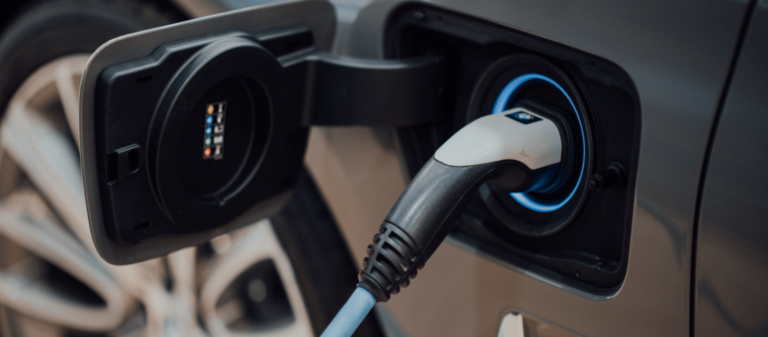Electric cars don’t have to be daunting. Here we take you through exactly how electric vehicles work and the main parts that make up an electric vehicle.
Electric cars may be quiet on the roads but they’re certainly making a lot of noise at the moment.
Everybody is talking about electric cars and their various benefits including being environmentally friendly, lower running costs and fewer taxes.
With the UK government offering various incentives for purchasing an electric vehicle (such as £3500 off the price of a new model), it’s no surprise that more and more people are making the switch to electric.
Whilst electric cars aim to replicate traditional petrol and diesel alternatives, the way they work is still a bit of a mystery for many.
Here we break down exactly how electric vehicles work and the different types of electric cars on the market for you to choose from.

How Do Electric Cars Work?
If you’re debating an electric car purchase then you may be wondering how electric vehicles work, well wonder no more…
Electric vehicles are all powered by an electric motor which gets its power from batteries. Electric cars work by plugging into a charge point and loading up on electricity from the grid.
The vehicles store this electricity in their rechargeable batteries which powers the motor.
Main Parts of an EV
Unlike petrol and diesel cars, EV’s have no radiators, engines, spark plugs or carburetors. In fact, EV’s have 90% fewer parts than internal combustion vehicles.
There are still plenty of components that keep electric car’s wheels turning though including:
Electric Motor
Using power from the internal batteries (more on those later), the motor is used to turn the car’s wheels and get it moving from a to b.
The spinning rotor within the motor spins the car’s wheels using a single gear. The more electricity the motor uses, the faster the rotor turns and as there’s no need for drivers to change from one gear to another, accelerating in an electric car is an incredibly smooth experience.
Electric vehicles also have the opportunity for multiple motors, unlike gas-powered vehicles. Dual-motor vehicles will have one motor dedicated to stop-start driving e.g. in the city and one motor dedicated to faster speeds.
You might be shocked to find out that four-wheel drive is even an option in EV’s. Each wheel can have its own dedicated motor, allowing tyres to rotate in different directions and provide faster turning for drivers.
Inverter
An inverter is the device that converts DC (Direct Current) power to the AC (Alternating Current) power that an electric motor uses to operate.
The inverter is able to control the speed at which the motor rotates by altering the frequency of the alternating current being supplied to the motor.
Drivetrain
All electric vehicles contain a drivetrain. The drivetrain sends power from the motor to the wheels, allowing the car to move forwards, turn and reverse.
EV drivetrains do this through a single-speed transmission.
Batteries
EV batteries store the energy from the electricity supply in order to help the electric car to run at peak performance.
Traditionally batteries will be placed low-down in the car and in some vehicles actually run along the floor. The reason for this is to keep the car’s centre of gravity low, helping it to stay planted as you turn corners.
An electric vehicle battery is actually a pack of multiple, smaller batteries that are linked together in electrical circuits to deliver maximum power efficiently.
With EV’s continuing to grow in popularity, battery technology is advancing at a rapid rate with manufacturers determined to find ways to increase battery energy density whilst keeping costs low. The battery is by far the most expensive part of the vehicle.
Electric cars are also impacted considerably by the weather. Cold weather can play havoc with EV batteries meaning you can expect to get much less range from the same charge amount in the colder months than you would in warmer weather.
Charging
Of course a big part of how electric vehicles work is down to the charging. Most electric and hybrid cars will need to be plugged in to recharge.
You can usually charge an electric car from either a standard domestic socket, a wall-mounted charger or a special fast charger.
If you decide to purchase an electric car you may be able to apply for a grant from the government towards installing a special wall-mounted charger at home, providing you have access to off-street parking.
Rapid chargers are commonly found at petrol stations, car parks and service stations and can boost your battery to 80% quickly. Most EV manufacturers recommend using a mixture of rapid charging and slow charging to get the most life out of your battery.
As EV technology continues to develop it’s thought that eventually you won’t even need to plug your car in to charge it. Instead you’ll simply drive onto a special plate or parking space and your car will charge wirelessly.

How Does Charging Work?
If you’re looking for an answer to the question, “how does EV charging work?”, then you’re in the right place.
As we’ve already mentioned, you can charge an electric car in two ways, by plugging it into a socket or plugging it into a charging unit (either at home or at a public charge point).
There are three different types of charger:
Three-pin plug – A standard three-pin plug like you find on most electric items that can be connected to any 13 amp socket.
Socketed – A charge point where you can connect your Type 1 or Type 2 cables.
Tethered – A charge point that already has cables attached with Type 1 or Type 2 adaptors.
Electric Vehicle Charging Speeds
If you’re thinking about switching to an electric car, often a cause for concern can be how long it takes to charge your vehicle. For most electric vehicles there are three different charging speeds:
Slow – Slow charging is usually done overnight or during the working day and takes around 8-10 hours.
Fast – Fast charging points are usually found in public places such as car parks and supermarkets and take around 3-4 hours to fully charge a car.
Rapid – Rapid chargers are becoming more popular at public charging points but can only be used by electric vehicles that have rapid charging capability. They usually take just 30-60 minutes to fully charge.
If you’re on the road then knowing where to find the closest charge points is essential. Download the Evaa app for access to various features including a live map of our charging points and the option to book your charging slot before arrival.

The Different Types of Electric Cars
When it comes to choosing an electric car, there’s more choice than you might think. The market is already heavily populated with different types of electric cars for you to choose from.
Major car manufacturers are also developing new models as we speak, meaning you no longer have to sacrifice a need for speed or performance to help look after the environment.
Below we’ve listed the three most popular types of electric vehicles.
Battery Electric Cars (BEC)
A battery electric car (BEC) is probably the type of electric car that you most commonly think of.
These cars run using an electric motor powered by batteries that are recharged by plugging the car into a socket or charging point.
They have no tail pipe so emit zero emissions into the environment making them arguably the most environmentally-friendly vehicle you can opt for.
There are various pros to driving a BEC, not just their green credentials, but also the fact that they tend to have lower running and maintenance costs, drive quietly and you can access a government grant when buying a new model.
The choice for BEC’s is still a little limited when compared with different types of electric vehicles, however more models are on their way from various leading manufacturers.
The range of BEC’s depends mainly on the size of the battery.
Plug-In Hybrid Vehicles (PHEV)
Like the name suggests, a plug-in hybrid vehicle (PHEV) combines batteries and petrol/diesel to power the car.
Batteries are used to power an electric motor whilst at the same time petrol or diesel is used to power an engine.
PHEV’s are charged up in exactly the same way as BEC’s (by plugging them in) however the electric range is much shorter. Depending on the make and model of the electric car you can expect around 40 miles of electric range per charge.
The plug-in hybrid is often seen as the perfect stepping stone for drivers who want to make the switch to an electric car but are reluctant to fully give-up on the petrol or diesel cars that they have become so accustomed to.
Usually PHEV’s will work by first running on the electric motor before switching to the fuel-powered engine to run the car once the electricity-powered batteries have run out.
Thanks to the hybrid model PHEV’s still emit less emissions than fully petrol or diesel cars and the gas-fuelled engine is often a good back-up for those worried about running out of charge on longer journeys.
Hybrid Electric Vehicles (HEV)
Hybrid Electric Vehicles (HEV) are the most common type of hybrid cars currently on the market.
These cars work in a similar way to plug-in hybrids in that they combine electric power with a petrol or diesel engine.
The one big difference however is that HEV’s cannot be plugged into the mains and the fuel-powered engine is still the main power source of the vehicle.
The battery in a hybrid car is significantly smaller which will reduce the electric range of the vehicle however as they still emit less emissions than petrol or diesel alternatives, drivers are still able to benefit from tax reductions.
Hybrid cars are often a cheaper alternative to other electric vehicles which makes them more accessible to a wider range of drivers.
Final Thoughts
Making the switch to an electric car is daunting, especially when you’ve become so accustomed to petrol and diesel vehicles.
Understanding how electric cars work however goes a long way in helping you to make your decision.
Here at Evaa we are dedicated to improving the EV charging infrastructure across the country in order to allow more drivers to switch to electric cars with peace of mind that they will always have access to a charge point, no matter where they are.
If you’d be interested in hearing more about our electric vehicle charging software, then contact us today.


